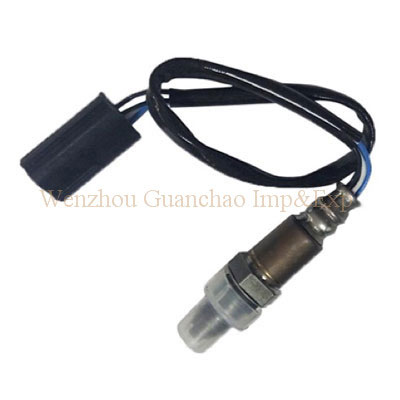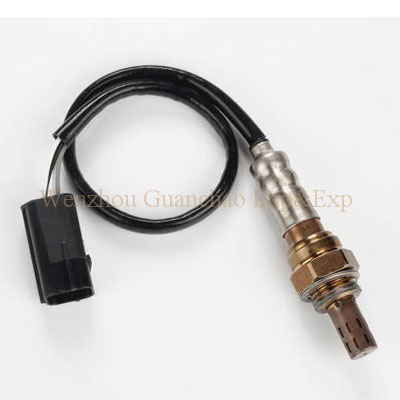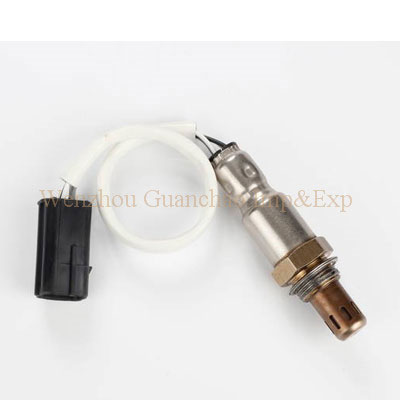How many oxygen sensors does a car have?,how to check the fault of the oxygen sensor?
How many oxygen sensors does a car have
How many oxygen sensors are there in a car? How many oxygen sensors are there in a car engine, generally according to the number of cylinders and the design of the car engine? It mainly depends on the configuration of the car. Generally, there are one or two. Unless some large-displacement engines such as V6 and V8 have two exhaust pipes, there may be four oxygen sensors. If the engine has only one exhaust header section, there are two oxygen sensors. If the engine has two header sections, there are four oxygen sensors, and two oxygen sensors for each header section. The oxygen sensor is an important component of the closed-loop control of fuel injection. The ECU calculates and adjusts the air-fuel ratio of the mixture in the combustion chamber according to the signal fed back to control the concentration of the mixture. To put it bluntly, the oxygen sensor detects the combustion of the engine. Yes, just spray more oil, if there is less air, spray less oil. Therefore, once the oxygen sensor fails, it will directly lead to the imbalance of the air-fuel ratio of the mixture, causing a series of problems.
The inspection method of the oxygen sensor, how to check the fault of the oxygen sensor?
1. An oxygen sensor is essential for an engine equipped with a three-way catalytic converter to reduce emission pollution. To make the engine of the three-way catalytic converter achieve the best emission purification effect, the air-fuel ratio of the combustible mixture must be kept within a narrow range near the theoretical air-fuel ratio. The purification capacity of hydrocarbons and nitrogen oxides will drop sharply. The oxygen sensor is an important device used to monitor whether the actual air-fuel ratio is rich or lean compared with the theoretical air-fuel ratio.
2. The oxygen sensor is generally installed in the exhaust manifold or the front exhaust pipe, and is connected to the electronic controller (ECU) through a wire connector. At present, oxygen sensors have two different structural forms: one is a zirconia sensor with zirconia as the test-sensitive element, and the other is a titania sensor with titania as sensitive material.
3. The oxygen sensor works in a high-temperature environment, and it should be replaced when the car travels 100,000 kilometers. There are two main forms of damage to the oxygen sensor, one is that it is blocked by carbon particles, and the electronic controller (ECU) will issue an instruction to reduce the fuel injection volume so that the mixture is too thin; the second is that the oxygen sensor is blocked by dust and engine oil. In atmospheric holes, the electronic controller will instruct the injector to inject more fuel, causing the mixture to be too rich. Premature damage to the oxygen sensor can also occur if leaded gasoline is used or if the engine has been repaired with an unsuitable silicone sealant.
The inspection of the oxygen sensor performance is divided into three situations, one is to detect the resistance of the sensor; the other is to measure the change of the voltage output signal of the oxygen sensor; the third is to observe the color of the appearance of the oxygen sensor.
Check oxygen sensor resistance. When the engine temperature reaches normal, unplug the wire connector of the oxygen sensor, and use a resistance meter to detect the resistance value between the terminals of the pressure sensor. If the value does not meet the requirements, the oxygen sensor should be replaced.
4. The detection of the voltage output signal of the oxygen sensor is to lead out a wire from the signal terminal after installing the wire connector of the oxygen sensor, start the engine, make the engine reach the normal working temperature, and keep the engine running at idle speed. At this time, use a voltmeter to detect the output voltage of the signal terminal of the oxygen sensor. When the high-voltage distribution line of a certain cylinder is unplugged (fire break), the oxygen content in the exhaust gas will drop. If the voltage indicated by the voltmeter rises, it means that the sensor performance is good (the output voltage of the oxygen sensor is generally 0.2-0.9 V, and the variation range is about 0.5 V). Attention should be paid when testing: Do not short-circuit the sensor terminal; Do not mistake the positive and negative connectors, connect the negative pole of the voltmeter to the negative pole of the battery, and connect the positive pole to the sensor signal line.
5. When checking the oxygen sensor, sometimes the cause of the failure can be known by observing the color of the top of the oxygen sensor. The normal color of the oxygen sensor tip is light gray. Once the color of the top of the oxygen sensor is found to change, it indicates that the oxygen sensor has a failure or a potential failure. The oxygen sensor with the black top is caused by carbon pollution. After removal, the carbon deposits on it should be removed. When the top of the oxygen sensor is found to be reddish brown, it means that the oxygen sensor is polluted by lead, which is caused by the use of leaded gasoline in the car. According to research data, when a car uses leaded gasoline for about 500 kilometers, the entire performance of the oxygen sensor will be lost, thereby poisoning the three-way catalytic converter, greatly reducing its purification efficiency, or even ineffective for purification. If it is found that the oxygen sensor has a white top, it means that it is caused by silicon pollution. This is because the engine uses unqualified silicon sealant during maintenance, and the oxygen sensor must be replaced at this time. Any silicone sealant that contains acetic acid (which acts as a vulcanizer) will damage the oxygen mold transfer device. Silicone is also called room temperature vulcanization (RTV) glue. Silicone containing acetic acid, if it is used in the part where the lubricating oil flows on the engine, the acetic acid will evaporate into the crankcase or the valve area, and then enter the intake pipe through the exhaust gas recirculation system. Under normal working conditions, it will pass through the engine from the exhaust pipe discharge, thereby damaging the oxygen sensor.
How to clean the oxygen sensor
Automobile engine oxygen sensors are generally recommended to be cleaned once every 80,000 kilometers. Generally, ferric chloride is dissolved in water and then mixed with hydrochloric acid. Soak the oxygen sensor in the mixed solution for 10 to 15 minutes. Wipe with a clean cloth after soaking. When the color of the oxygen sensor is white, it means it has been cleaned. The service life of the oxygen sensor is generally more than 160,000 kilometers.

Disassembly method and precautions of oxygen sensor
The special sleeve must be installed on the root of the oxygen sensor before it can be loosened by force. Otherwise, it is easy to slip teeth, which is very troublesome.
Pay attention to the wiring harness on the oxygen sensor when unscrewing it, and unscrew it after the installation is complete. Do not turn to the end at one time when screwing at the same time. In this way, the wire harness is easily deformed or even broken. After unscrewing, it is necessary to adjust the rotation angle back and forth to protect the wire harness.
There are also differences in the size of the special sleeve. Before purchasing, you must first find out what size the oxygen sensor is.
It is difficult to disassemble the oxygen sensor, and it is not difficult. Unfamiliar, and no tools and equipment. Or take it to a repair shop for a replacement.
Now all models will be equipped with oxygen sensors, whether it is gasoline vehicles, diesel vehicles, or even motorcycles, oxygen sensors can be seen everywhere.
The oxygen sensor plays an important role in the vehicle. It can monitor the oxygen content in the exhaust in time to judge the working condition of the engine. At the same time, it can also transmit electrical signals to the ECU to automatically control the working condition of the vehicle, which is very helpful for emissions and power.
 English
English Pусский
Pусский



